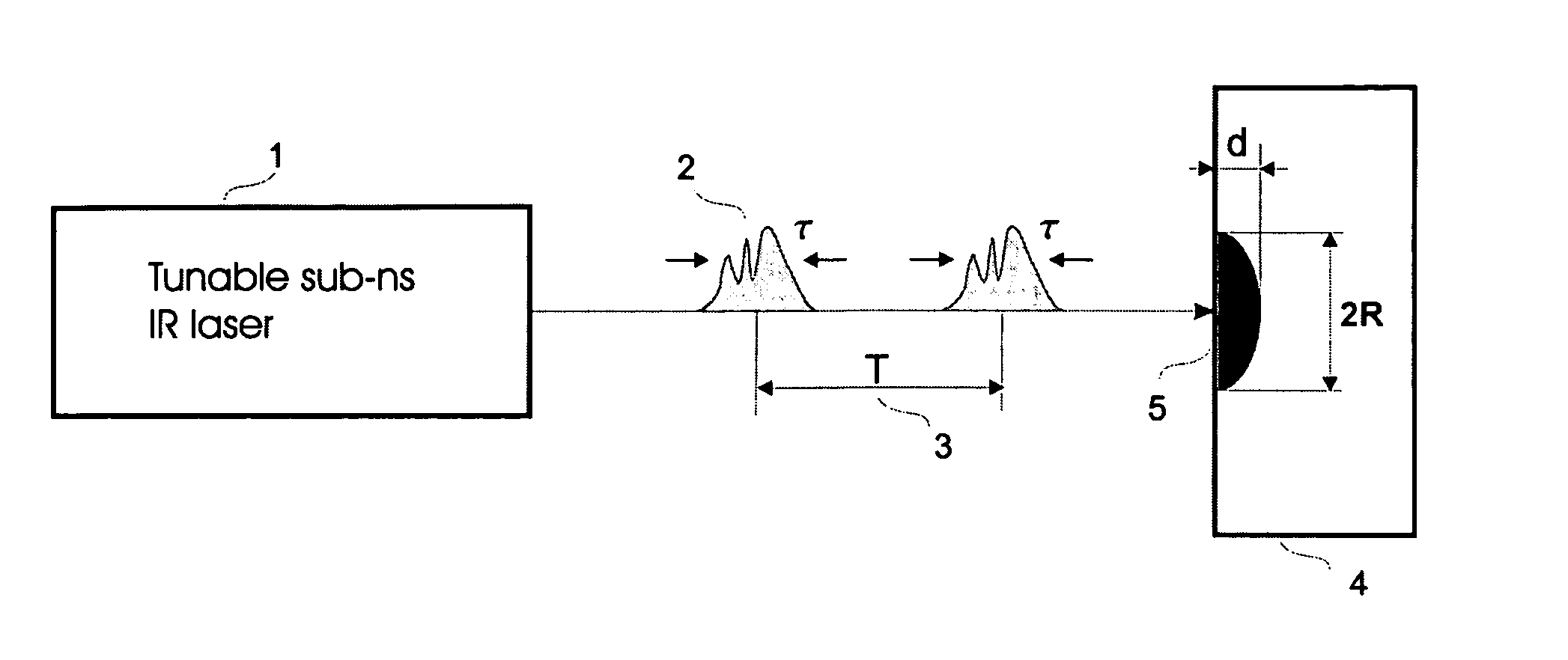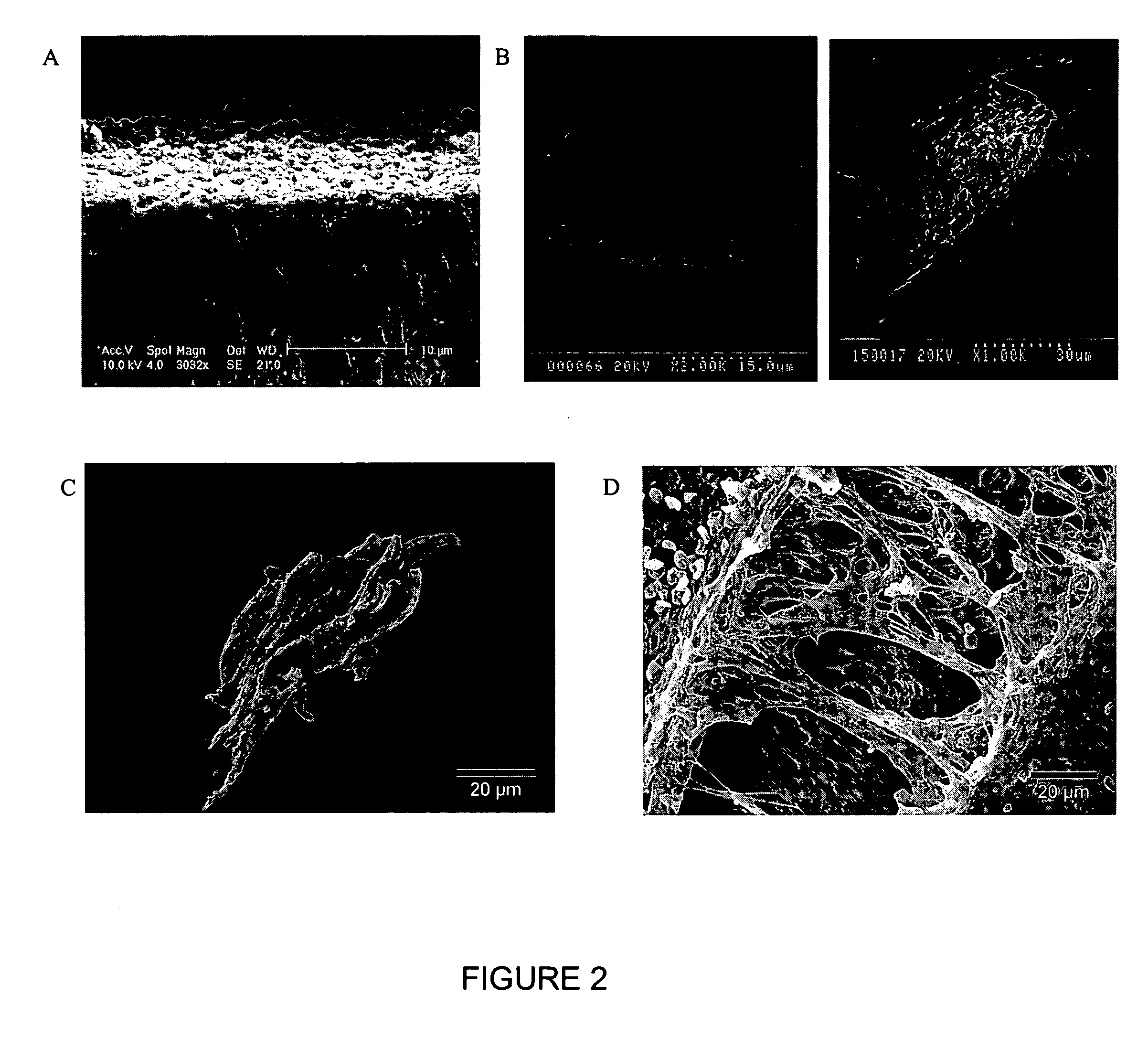Laser selective cutting by impulsive heat deposition in the IR wavelength range for direct-drive ablation
a laser selective cutting and laser technology, applied in boring tools, radiation therapy, therapy, etc., can solve the problems of inefficient photomechanical spallation, limited widespread use of lasers as a replacement for mechanical surgical tools, mechanical breakdown and ejection of materials, etc., to achieve optimal efficiency, minimize collateral damage, and achieve efficient material ablation
- Summary
- Abstract
- Description
- Claims
- Application Information
AI Technical Summary
Benefits of technology
Problems solved by technology
Method used
Image
Examples
example
[0100] To optimally cut tissue for medical applications, the laser pulse should be tuned to the water absorption lines. Water is the largest single component in the chemical composition of biological tissue. The absorption processes of water are strongest in the IR and near VUV. Of the two wavelength regions, the IR is preferred as the UV will be absorbed by other materials before hitting the target area and cause deleterious photochemistry. The strongest absorption bands in water are related to the OH symmetric stretch (3400 cm−1) and OH bending motions (1650 cm−1). The absorption is so strong that the 1 / e penetration depth in pure water is 0.75 μm. The OH bend is similar in absorption strength. The pulse duration in this case should be less than 1 ns and ideally should be between 1 to 100 ps. Shorter pulses will lead to multiphoton absorption effects and deleterious ion formation. The temperature of the lattice should be superheated to above the vaporization point of the constitue...
PUM
| Property | Measurement | Unit |
|---|---|---|
| Time | aaaaa | aaaaa |
| Length | aaaaa | aaaaa |
| Wavelength | aaaaa | aaaaa |
Abstract
Description
Claims
Application Information
 Login to View More
Login to View More - R&D
- Intellectual Property
- Life Sciences
- Materials
- Tech Scout
- Unparalleled Data Quality
- Higher Quality Content
- 60% Fewer Hallucinations
Browse by: Latest US Patents, China's latest patents, Technical Efficacy Thesaurus, Application Domain, Technology Topic, Popular Technical Reports.
© 2025 PatSnap. All rights reserved.Legal|Privacy policy|Modern Slavery Act Transparency Statement|Sitemap|About US| Contact US: help@patsnap.com



